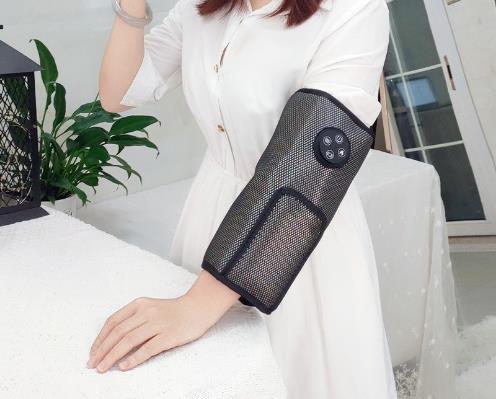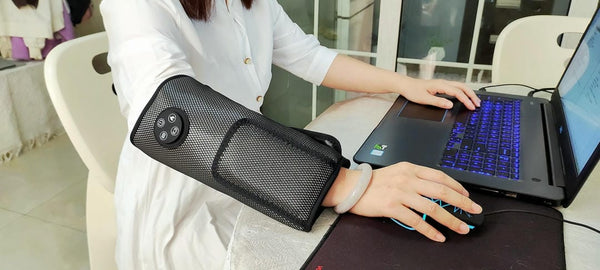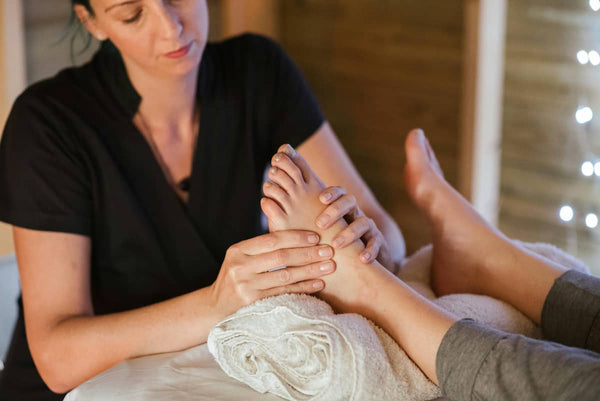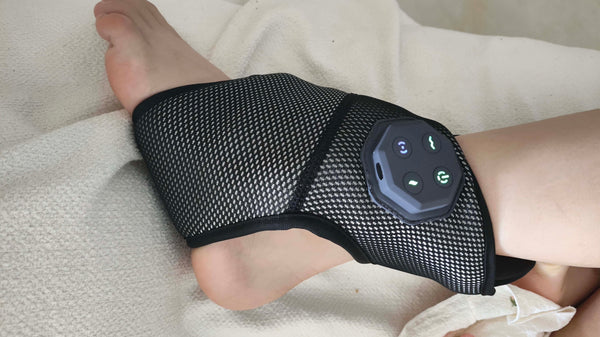 If you're an office worker, chances are you're no stranger to the nagging discomfort of lower back pain. Hours spent hunched over a desk can take a toll, leading many to seek relief. One increasingly popular option is the massager machine for back pain. But what exactly are these devices, and can they truly deliver on their promise of alleviating that persistent ache? The market is flooded with options, from simple vibrating pads to sophisticated devices boasting multiple functions. Understanding their potential, limitations, and the varying user experiences is key before making an investment in your well-being.
If you're an office worker, chances are you're no stranger to the nagging discomfort of lower back pain. Hours spent hunched over a desk can take a toll, leading many to seek relief. One increasingly popular option is the massager machine for back pain. But what exactly are these devices, and can they truly deliver on their promise of alleviating that persistent ache? The market is flooded with options, from simple vibrating pads to sophisticated devices boasting multiple functions. Understanding their potential, limitations, and the varying user experiences is key before making an investment in your well-being.
This article aims to delve into the world of these therapeutic tools, exploring how they work, the benefits they might offer, and the controversies surrounding their long-term efficacy and cost-effectiveness. We'll examine different perspectives to help you make an informed decision, especially if you're looking for a back pain management device to incorporate into your routine.
What is a Massager Machine for Back Pain?
At its core, a massager machine for back pain is an electromechanical device designed to mimic the therapeutic effects of manual massage. The primary goal is usually to alleviate muscle soreness, reduce tension, improve local blood flow, and provide a sense of relaxation to the affected area. For office workers, this often means targeting the lumbar region, which bears significant strain from prolonged sitting. These machines can vary greatly in design, from handheld units for targeted spot treatment to larger cushions, chairs, or belts that cover a broader area of the back.
The fundamental principle involves applying physical stimuli—such as vibration, kneading, rolling, or tapping—to the muscles and soft tissues. Some more advanced models incorporate additional therapeutic modalities like heat, air compression (squeezing), or even mild electrical impulses. The idea is to break up muscle knots, soothe inflammation, and promote a physiological response that leads to pain reduction. Think of it as an attempt to bring some of the principles of traditional physiotherapy, like improving circulation and releasing tension, into a convenient, at-home format.
- Designed to replicate manual massage techniques.
- Aims to reduce muscle soreness and tension.
- Can improve local circulation and promote relaxation.
- Vary widely in form factor and features.
The Evolution of Back Pain Management Devices
The quest for back pain relief is certainly not new, but the tools we use have evolved significantly. Early back pain management devices were often simple mechanical aids—think rudimentary rollers or wooden tools designed for self-massage. While these could offer some relief, their effectiveness was limited by their simplicity and the user's ability to apply them correctly. The advent of electricity brought about the first generation of vibrating massagers, which offered a more consistent, albeit often superficial, form of stimulation.
Over the decades, technological advancements have led to far more sophisticated machines. We've seen the incorporation of ergonomic designs, a deeper understanding of muscle physiology influencing massage patterns, and the integration of multiple therapeutic approaches into single devices. From basic vibrating pads, we've progressed to shiatsu-style massagers with rotating nodes that attempt to mimic a therapist's thumbs, and even percussive massagers that deliver rapid pulses deep into muscle tissue. This evolution reflects a growing demand for effective, accessible solutions for common ailments like the lower back pain frequently experienced by those in sedentary jobs.
- Started with simple mechanical tools.
- Evolved with electricity to basic vibrating massagers.
- Modern devices incorporate ergonomic designs and multiple therapies.
- Reflects demand for accessible pain relief solutions.
Core Principles: How Do Back Pain Relief Machines Work?
The effectiveness of a back pain relief machine hinges on its ability to positively influence the body's tissues and nervous system. Different machines employ various mechanisms, often drawing inspiration from established physiotherapy principles. For instance, vibration therapy can help relax tense muscles and may stimulate local blood flow, bringing more oxygen and nutrients to the area. This can be particularly beneficial for office workers whose back muscles become stiff and ischemic from static postures.
Kneading or shiatsu-style massagers use rotating nodes or rollers to apply pressure to specific points, aiming to release trigger points (those tender "knots" in muscles) and stretch muscle fibers. Heat therapy, a common feature, works by dilating blood vessels, which further enhances circulation and can soothe discomfort. Some advanced therapeutic machine for back models use air compression to create a squeezing sensation, which can gently mobilize tissues and promote lymphatic drainage. The goal across these technologies is to interrupt pain signals, reduce muscle spasm, and foster an environment conducive to healing and comfort, almost like trying to restore a natural flow and balance to the affected tissues.
- Vibration: Relaxes muscles, may improve local circulation.
- Kneading/Shiatsu: Targets trigger points, stretches muscle fibers.
- Heat Therapy: Dilates blood vessels, soothes discomfort.
- Air Compression: Mobilizes tissues, may aid lymphatic drainage.
Common Types and Features of Massagers for Back Pain
 When searching for a massager for back pain, you'll encounter a diverse range of options, each with its own set of features and intended applications. Handheld massagers are typically compact and allow for targeted relief to specific, accessible areas. Massage cushions and chair overlays are popular for office workers as they can be used while sitting, providing continuous or intermittent massage to the entire back. These often feature rolling or shiatsu nodes and sometimes heat.
When searching for a massager for back pain, you'll encounter a diverse range of options, each with its own set of features and intended applications. Handheld massagers are typically compact and allow for targeted relief to specific, accessible areas. Massage cushions and chair overlays are popular for office workers as they can be used while sitting, providing continuous or intermittent massage to the entire back. These often feature rolling or shiatsu nodes and sometimes heat.
Then there are belt-style massagers that wrap around the lower back, delivering vibration, heat, or even percussive therapy. More comprehensive systems might include features like red light therapy, purported to aid in tissue repair, or various programmed massage modes designed to simulate different techniques. The choice often depends on the specific area of pain, desired intensity, convenience, and of course, budget. Understanding these types and features is the first step in finding a machine for back pain that might suit your individual needs. For instance, a device combining heating, squeezing, red light, and vibration could offer a multi-faceted approach to muscle relaxation.
- Handheld Massagers: For targeted, localized relief.
- Massage Cushions/Chair Overlays: Convenient for use while seated, cover larger areas.
- Belt-Style Massagers: Focus on the lower back, often with heat/vibration.
- Advanced Features: May include red light therapy, multiple modes, air compression.
The Reported Benefits of Using a Back Pain Massager Machine
Many users turn to a massager machine for back pain seeking immediate relief from discomfort, and often, they find it. One of the most commonly reported benefits is muscle relaxation. The mechanical action of the massager can help ease tension in tight, overworked muscles—a frequent complaint among those who spend their days at a desk. This relaxation can, in turn, lead to a temporary reduction in pain perception. Think of it as soothing an irritated area; it doesn't necessarily fix the root cause, but it can make the symptoms more manageable.
Improved local blood circulation is another potential benefit. Increased blood flow can bring more oxygen and nutrients to the tissues and help flush out metabolic waste products, which may contribute to muscle soreness. Some individuals also experience a sense of general well-being and stress reduction from the massage experience itself. However, it's crucial to approach these benefits with a balanced perspective. As some users note, the relief can be temporary, and a massager machine for back pain may not address underlying structural issues or chronic conditions effectively without other interventions. It's more of a supportive measure than a standalone cure.
- Temporary muscle relaxation and tension relief.
- Potential for improved local blood circulation.
- May offer temporary reduction in pain perception.
- Can contribute to stress reduction and well-being.
- Often provides immediate, though sometimes short-lived, comfort.
What Conditions Might a Machine for Back Pain Help Manage?
A machine for back pain can be a helpful tool for managing certain types of discomfort, particularly those stemming from muscular issues. It's often sought after for general muscle soreness, stiffness from inactivity or prolonged static postures (hello, desk jockeys!), and mild to moderate muscle strains. If your back pain is primarily due to muscle tension, fatigue, or overuse, a massage machine might offer symptomatic relief by helping to relax those tight bands of tissue.
It's important to distinguish between pain suitable for self-management with a device and pain that requires professional medical attention. While these machines can be part of a broader back pain management device strategy for non-specific lower back pain, they are generally not recommended as a primary treatment for acute injuries, nerve compression (like sciatica without a doctor's okay), inflammatory conditions, or severe, undiagnosed pain. The goal here is management and comfort, not a cure for complex medical problems. Many find them useful for day-to-day aches, almost like a "tune-up" for muscles that have been under strain.
- General muscle soreness and stiffness.
- Pain from prolonged static postures (e.g., office work).
- Mild to moderate muscle strains (after acute phase).
- Non-specific lower back pain (as part of a broader strategy).
- Not a primary treatment for acute injuries or nerve issues without medical advice.
Understanding Effectiveness: What Do Users Experience with These Devices?
The perceived effectiveness of a massager machine for back pain is quite varied and often sparks debate, forming the crux of the controversy. One perspective, which I've encountered frequently, is that these machines provide noticeable temporary relief. Users might feel significantly better immediately after a session, with reduced stiffness and soreness. However, this relief doesn't always translate into long-term improvement, especially if the massager is used as a standalone, supplementary treatment without addressing underlying causes like poor posture or muscle weakness. It's akin to taking a painkiller; it helps with the symptoms but doesn't fix the problem.
Conversely, another group of users reports more sustained positive results, particularly with machines that offer a combination of functions—such as those integrating heating, squeezing (air compression), red light therapy, and varied vibration modes. These users often emphasize the benefits of deep muscle relaxation and improved comfort, feeling that these multi-functional devices offer a more holistic approach. Then there's the critical perspective, which questions the value proposition. Some argue that compared to the cost of a single professional manual treatment, the benefits derived from even high-cost massage machines might be short-lived, making the investment questionable for chronic issues. It's really, really important to weigh these different experiences.
- Perspective 1: Temporary relief, but limited long-term improvement for chronic pain.
- Perspective 2: Positive results, especially with multi-functional machines (heat, squeeze, light, vibration).
- Perspective 3: High cost of some machines criticized if benefits are only short-term compared to manual therapy.
- Effectiveness often depends on the type of pain, the machine's features, and consistent, proper use.
Cost vs. Benefit: Are High-Priced Back Massagers a Worthy Investment?
The price range for massager machines for back pain is vast, from budget-friendly handheld units to premium massage chairs costing thousands. This brings us to a key consideration: is a more expensive machine for back pain necessarily more effective, and is it a worthwhile investment? Perspective 3, which criticizes the short-term benefits of high-cost machines relative to manual treatments, highlights a valid concern. If a device offers only fleeting relief from chronic pain, its high price tag can indeed seem unjustified, especially when you could allocate those funds to professional physiotherapy sessions that might address root causes.
However, the calculation isn't always straightforward. For someone experiencing frequent, albeit mild, muscle tension from work, the cumulative cost of regular professional massages can quickly exceed the price of a good quality home device. If a machine provides consistent, albeit temporary, relief and improves daily comfort, its value might be perceived differently. The key is to align expectations with what the device can realistically offer. A high-end therapeutic machine for back with multiple functions might provide a more comprehensive and satisfying experience than a basic model, but it's unlikely to be a magic bullet for all types of back pain. While specific data on price versus long-term outcomes is varied, user reviews often indicate satisfaction is tied to how well the machine meets specific, realistic needs rather than price alone.
- Prices vary significantly, from budget to premium.
- High cost doesn't always guarantee superior long-term results for chronic issues.
- Consider cumulative cost of professional therapy vs. a one-time device purchase.
- Value depends on individual needs, frequency of use, and type of relief sought.
Key Considerations Before Choosing Your Therapeutic Machine for Back
Before investing in a therapeutic machine for back, especially for an issue as persistent as lower back pain can be for office workers, a few thoughtful considerations are in order. Firstly, understand the nature of your pain. Is it muscular, or could there be an underlying issue that needs medical diagnosis? If you have severe, persistent, or radiating pain, consulting a healthcare professional is always the first, best step. They can help rule out serious conditions and advise if a massage device is appropriate for you.
Secondly, consider the features that are most likely to benefit you. Do you respond well to heat? Is a deep kneading action more effective for your type of muscle tightness, or would gentle vibration suffice? Reading user reviews and, if possible, trying out different types of massagers can be insightful. Also, think about convenience and usability. A bulky machine that's difficult to set up might end up unused, regardless of its features. Finally, establish realistic expectations. A back pain relief machine is a tool for comfort and management, not a cure-all. It can be a valuable part of a broader wellness strategy that includes exercise, ergonomic adjustments, and professional care when needed.
- Consult a healthcare professional for severe or undiagnosed pain.
- Identify features most beneficial for your specific needs (e.g., heat, type of massage).
- Consider ease of use and convenience for regular application.
- Set realistic expectations: it's a tool for management, not a cure.
- Think about how it fits into your overall wellness routine.
In conclusion, a massager machine for back pain can be an effective tool for providing temporary relief from muscle soreness and tension, particularly for office workers prone to such discomfort. The effectiveness often hinges on the type of machine, its features, and how well it aligns with the user's specific condition and expectations. While some find significant comfort and relaxation, especially from devices combining multiple therapies like heat and various massage actions, it's generally not a substitute for addressing the root causes of chronic or severe back pain.
The debate around long-term efficacy versus cost, especially for high-end models, underscores the importance of an informed decision. These devices are best viewed as a component of a holistic back pain management device strategy, complementing other healthy habits and professional advice. Ultimately, if a massager for back pain helps you manage your daily discomfort and improve your quality of life, it can be a worthwhile addition to your self-care toolkit.
Frequently Asked Questions (FAQ)
What are the top-rated massager machines for back pain according to user comparisons?
Identifying "top-rated" massager machines for back pain can be subjective as it often depends on individual needs, pain types, and preferences. However, user comparisons frequently highlight machines that offer a good balance of features, durability, and effectiveness for common complaints like muscle tension. Devices that combine shiatsu-style kneading with heat therapy often receive positive mentions for relieving general back stiffness. Percussion massagers (massage guns) are popular for targeting specific deep muscle knots, though they may be intense for some. For overall back coverage, massage cushions or chair pads that offer various massage zones and intensity levels are frequently favored, especially by those who spend long hours sitting. It's always advisable to check recent reviews on reputable retail sites and consumer advocacy platforms, looking for patterns in feedback related to your specific needs (e.g., lower back focus, portability, intensity preferences) rather than a single "best" model.
How does price affect the pain relief effectiveness of these machines for back pain?
Price can influence several aspects of a machine for back pain, such as build quality, the number and sophistication of features (e.g., variety of massage modes, heat, air compression, red light), motor power, and durability. Generally, higher-priced models may offer a more robust massage, more targeted therapies, or more customizable options, which *can* translate to better perceived pain relief for some users. For example, a more expensive unit might have stronger motors for deeper tissue work or more refined kneading mechanisms. However, a higher price doesn't automatically guarantee superior effectiveness for every individual or every type of back pain. Sometimes, a simpler, less expensive device might provide adequate relief for mild muscle tension. The key is to match the machine's capabilities and your budget to your specific pain relief needs and expectations. Effectiveness is less about price alone and more about the right features for your condition. While specific statistical figures correlating price directly to long-term pain relief outcomes are not readily available, anecdotal evidence suggests satisfaction is often linked to feature sets rather than just cost.
What quality checks do consumers recommend for back pain machines?
Consumers often recommend several quality checks when selecting back pain machines to ensure they are making a good investment. Firstly, check the build quality and materials; the device should feel sturdy and durable, not flimsy. Secondly, look into the motor power and massage mechanism – can it deliver the intensity you need without stalling or feeling weak? User reviews are invaluable here. Thirdly, consider the ergonomics and design: Is it comfortable to use? Can it effectively reach the target areas of your back? For electrical devices, safety certifications (like UL, CE) are important. Warranty and customer support are also key quality indicators; a good warranty period and responsive customer service can be crucial if issues arise. Finally, many users recommend checking the return policy, especially if buying online, in case the machine doesn’t meet their specific pain relief needs. Reading a range of user reviews focusing on long-term use, not just initial impressions, can also reveal potential quality or durability issues.
This reply is generated based on currently verifiable public information. It is recommended to cross-check key content with authoritative sources.




0 comments